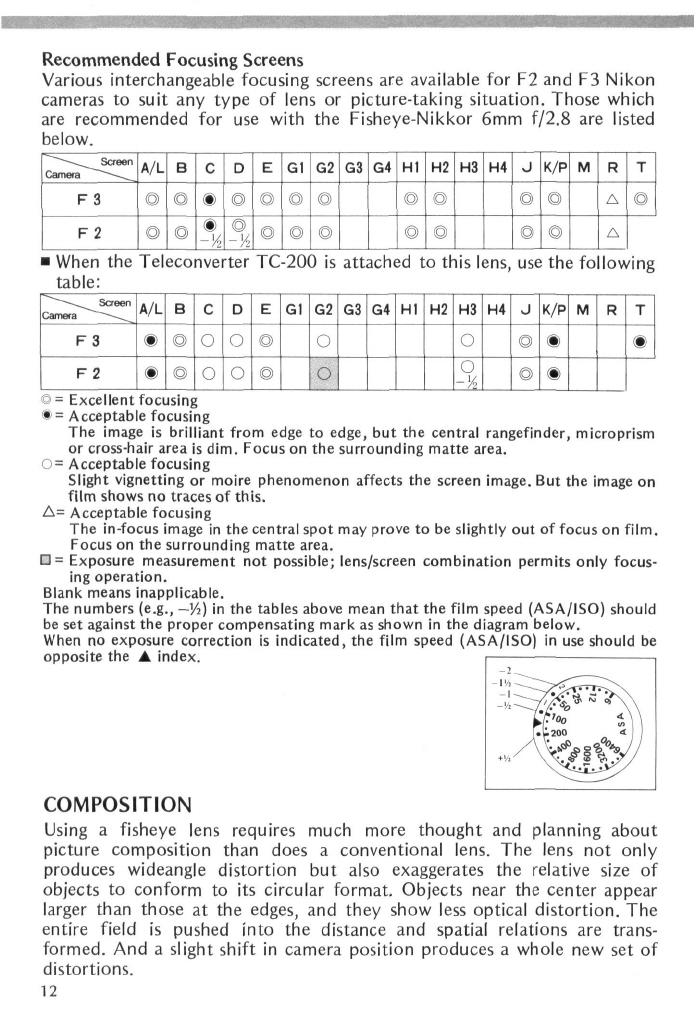
Recommended Focusing Screens
Various interchangeable focusing screens are available for F2 and F3 Nikon
cameras to suit any type of lens or picture-taking situation. Those which
are recommended for use with the Fisheye-Nikkor 6mm f/2.8 are listed
below.
^"---^^^ Screen
Camera ^""""----^^
F3
F2
A/L
©
©
B
©
©
C
®
®
D
©
©
-a
E
©
©
G1
©
©
G2
©
©
G3
G4 HI
©
©
H2
©
©
H3
H4 J
©
©
K/P
©
©
M
R
A
A
T
©
• When the Teleconverter TC-200 is attached to this lens, use the following
table:
^"~~~-\^^ Screen
Camera -^^
F3
F2
A/L
•
®
B
©
©
c
o
o
D
o
o
E
©
©
G1
G2
O
o
G3
G4
HI
H2 H3
O
o
-Vz
H4 J
©
©
K/P
®
®
M
R
T
®
O* Excellent focusing
®= Acceptable focusing
The image is brilliant from edge to edge, but the central rangefinder, microprism
or cross-hair area is dim. Focus on the surrounding matte area.
0= Acceptable focusing
Slight vignetting or moire phenomenon affects the screen image. But the image on
film shows no traces of this.
A= Acceptable focusing
The in-focus image in the central spot may prove to be slightly out of focus on
film.
Focus on the surrounding matte area.
Q= Exposure measurement not possible; lens/screen combination permits only focus-
ing operation.
Blank means inapplicable.
The numbers
(e.g.,
— y
2
) in the tables above mean that the film speed (ASA/ISO) should
be set against the proper compensating mark as shown in the diagram below.
When no exposure correction is indicated, the film speed (ASA/ISO) in use should be
opposite the • index.
COMPOSITION
Using a fisheye lens requires much more thought and planning about
picture composition than does a conventional lens. The lens not only
produces wideangle distortion but also exaggerates the relative size of
objects to conform to its circular format. Objects near the center appear
larger than those at the edges, and they show less optical distortion. The
entire field is pushed into the distance and spatial relations are trans-
formed.
And a slight shift in camera position produces a whole new set of
distortions.
12


















